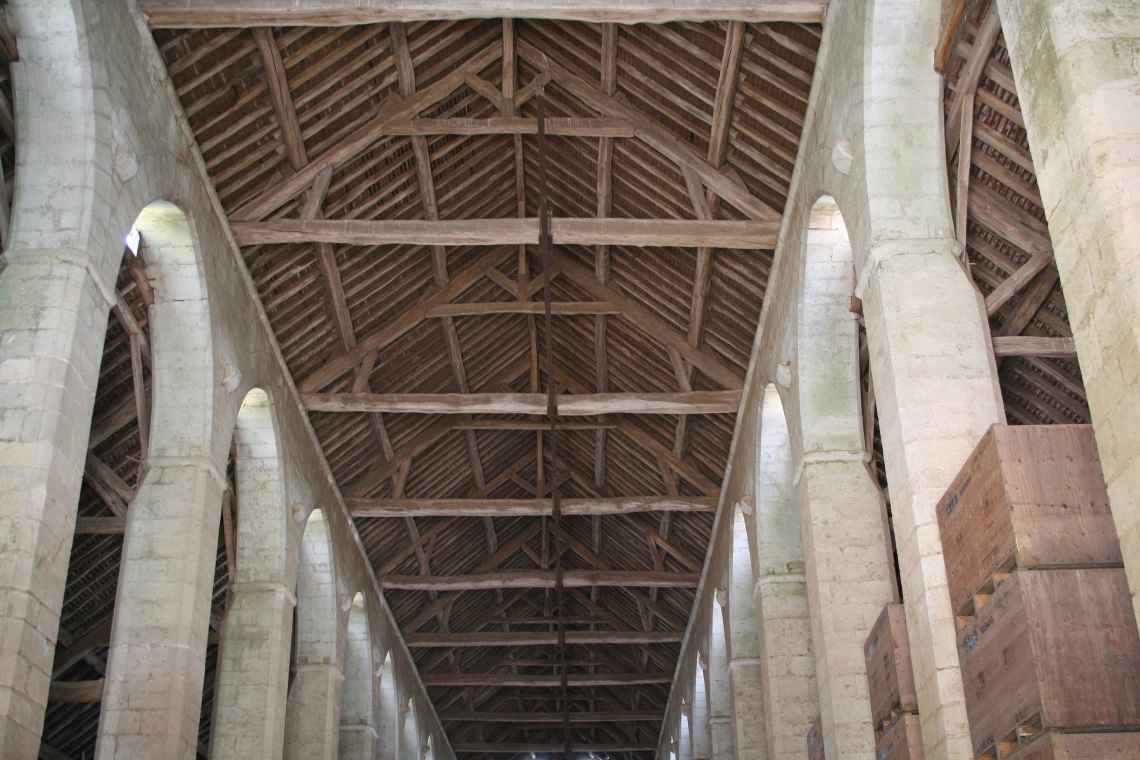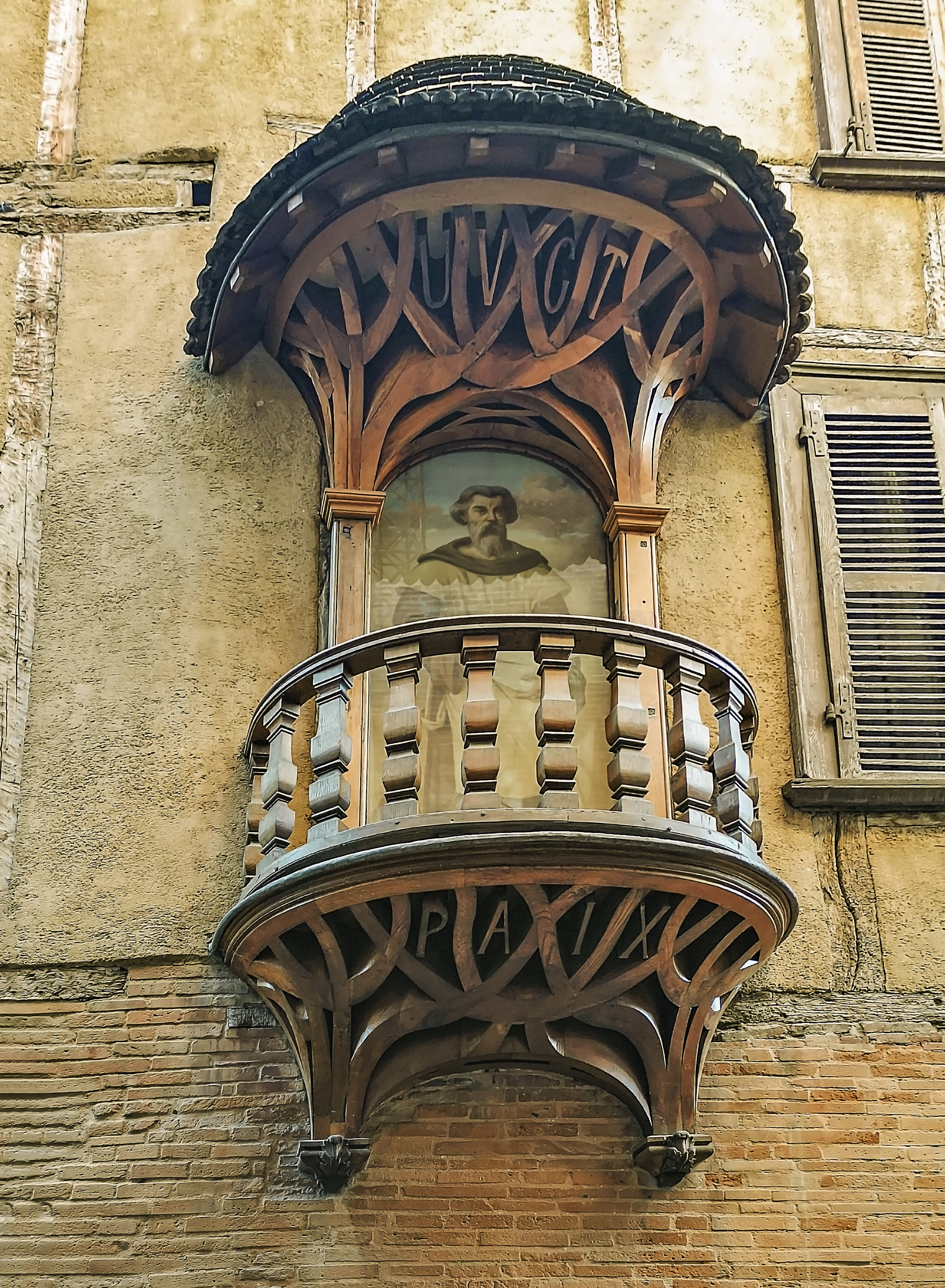The scribing tradition in French timber framing
The contemporary world of building is dominated by standardization and mechanization. That are transforming builders into mere laborers devoid of any creative thinking. But France has a tradition, the scribing tradition, that is alive and well, although not given sufficient prominence, which allows men and women builders to retain full mastery of the intellectual and technical aspects of designing volume and space. This skill also enables the coupling of highly sophisticated technical thinking and practice. Amounting to a true vision of human beings as masters of their own destiny.

A professional building skill that is almost art
The scribe tradition in French timber framing, or the “trait de charpente” as the carpenters call it, is a technique that helps to design complex wooden buildings in three dimensions. The French scribing system brings together the different graphic possibilities in use in France since the thirteenth century to express, with drawings of the greatest possible precision, the reality of a building’s volumes. This reality includes the way volumes fit together and the characteristics of the pieces of timber that frame them. Using this procedure during the prefabrication phase, the carpenter can identify on the ground all the constituent pieces. Irrespective of their complexity. Thus, the worker can be sure that when the frame is assembled, even the most complex and voluminous elements will fall perfectly into place.

The core parts of the scribing tradition in French timber framing
Overall, there are five distinct steps that all carpenters need to learn and apply to their craft in order to respect the French scribing tradition.
1. Drawing the outline.
This step involves drawing the shapes of the structural work in real size on the ground. It allows the carpenter to express the reality of the volumes. To identify the various elements that compose the project and their imbrication. Thanks to this method, the carpenter can determine, before manufacturing, on all the parts, the cuts, the angles… And assure their perfect interlocking at the time of the assembly. This step is the most essential one of the scribing technique.
2. Outlining the pieces of wood.
The second step of the tradition involves the marking of the pieces according to a very precise code. During this stage, the carpenter will trace the lengths, the assemblies. And also the cuts to outline the future shape of the pieces of wood. Since no piece is interchangeable, this step allows the carpenter to know in what order he must assemble the pieces.
3. Trimming.
The wood pieces are cut with machines and hand tools to guarantee a maximal precision. Historically, no robots or machines are used during this step, according to the tradition.
4. Line reassembly.
After being cut in their right shape, the pieces of wood are reassembled on the floor plan (drawn during step one) in order to position the pull on the mortise and tenon joints. The mortise and tenon joint is the ancestral assembly of traditional frames. Finally, the tie rod is installed on the structure. A part that is essential to the proper functioning of a mortise and tenon joint.

5. Lifting and installing the frame.
Depending on the site and the access possibilities, the lifting is done either with a crane or with a manual elevator. A modern version of the animals and wheels used the past.
A little history of carpentry and how scribing tradition was born
As soon as humans sought to settle down, they started building shelters with the natural resources that surrounded them. Sheltering and moving are therefore the two functions that prevailed at the birth of the carpenter’s trade.
It is difficult to determine the origin of the technical and symbolic tradition of scribing in French timber framing. However, most carpenters believe that holds its roots in the founding myths cultivated by the trade guilds. Consequently, the mastery of scribing probably dates back to the eras of founders such as Solomon, Maître Jacques (master stonemason) and Père Soubise (master carpenter). On the other hand, companion traditions (a French tradition in UNESCO’s list as well) attribute the invention of this art to Pythagoras, who would have been initiated to the tradition by Egyptian builders.
Scribing tradition
In both ways, the first mentions of the scribing tradition as we know it are from the Middle Ages. At the time, wood craftsmen were not specialized; they only knew how to cut wood, make a frame, a piece of furniture or a barrel. It is only in the 13th century that the different woodworking trades structured themselves and specialized by receiving particular status. The carpenters’ guild then exercised its authority over several woodworking trades: huchiers, coopers, cartwrights, roofers and turners. At the beginning of the 14th century, these prerogatives were abolished and the carpenters’ guild was divided in two:
- on one hand, the carpenters known as “de la petite cognée” (of the small axe). Who carried out small wooden works, hence the term “menuisier” (carpenter).
- on the other hand, the carpenters known as “de la grande cognée” (of the large axe). Who carried out large-scale wooden works.
This is how the first concrete signs of scribing in French timber framing were observed during the Middle Ages. The first notable works were medieval monasteries, developed in close correlation to the building of Gothic monuments.

In 1766, Gaspard Monge began to teach descriptive geometry, which he invented thanks to his experience with the scribing tradition. He demonstrated, generalized and rationalized the methods of drawing for carpenters and published his work in 1770. Industrial use and the resulting standardization led to a huge evolution of the technical drawing aspect of the tradition.
Transmission through degrees and peer-to-peer teaching
Learning the French scribing system is open to all. With certificates and diplomas awarded under the national education system (vocational training certificate (CAP) and occupational certification (BP)). Other students prefer the learn the craft through apprenticeships (splitting the time between school and a year-round internship). Or directly during their senior year of high-school (professional baccalaureate specialized in carpentry).

The Compagnonnage movement of France also contributed to the diffusion and development of the tradition. Its progressive mastery allows it to teach their students about this specific tradition in a practical way. Showing a more and more refined knowledge of the scribing art and its applications to younger generations has always been the corollary of a moral and technical progression highly valued in the companion societies.
Levels of excellence in the field are reached through competitions. Such as the Meilleur ouvrier de France (Best Tradesperson in France), the Meilleur apprenti de France (Best Apprentice in France), and the Olympiades des métiers (Trade Olympics). All of these events are very popular in France and highlight the professionals that participate.
National cultural importance and the Compagnonnage society
First of all, French scribing is nationally important because many historical buildings (such as the Notre Dame of Paris cathedral, to name only one) were build thanks to this tradition.

Additionally, carpenters who are members of the sociétés de Compagnonnage (trade guilds) attach a profound symbolic and initiatory value to the French Scribe method. To them, French scribing is not only a skill. It plays an important role in the initiation of students during their Tour de France (further described in the Companionship post). The successive rites of passage (novice, journeyman, confirmed journeyman) of the carpenters are, in fact, metaphorical aspects borrowed from the field of scribing. More than a technical discipline, scribing represents the gold standard of a veritable vision of the world that is specific to the the guild, passing on its values.
A need for recognition more than protection for a very much alive scribing tradition
The mastery of the French scribe system is accompanied by powerful symbolic and social practices that play a crucial role in the characteristic representations of the compagnonnages or trade guilds. Knowledge of it enables one, metaphorically speaking, to know exactly how to behave in the universe and society. Since the Middle Ages, it has made possible the construction of the greatest French monuments. It also makes possible a social and professional achievement that is accessible to all. Including young people from the underprivileged sections of society. Indeed, the building trade is a potentially powerful means for young people in social or educational difficulty to obtain a qualification and become integrated into society. Furthermore, it contributes to intercultural and international dialogue.

This is part of why UNESCO decided to add the scribing tradition in French timber framing to its Representative List of Intangible Cultural Heritage in 2009.
Such an inclusion was necessary at the time to help the general public as well as the authorities to recognize the value of the professional builders, a community that was not fully appreciated. 13 years from then, the professional building field is much more recognized. And more and more students enrolled in building-related degrees. Moreover, the exchanges taking place with foreign countries concerning timber vocations did benefit from the enlistment. The young French carpenters, who now enjoy better national and international reputations, can now hope to be hired internationally.
However, the recent impressive growth in digitally-controlled machines that are increasingly being adopted by businessmen, is threatening the tradition. Indeed, some manual steps of the technical skills of scribing for French timber framing are being replaced by robots for productivity and cost reasons.
Resume
The scribing tradition in French timber framing, or the “trait de charpente” in French, refers to the design complex of wooden buildings in three dimensions. This carpentry technique is made out of five steps. First, the craftsman draws the outline of the project on the ground; then he outlines the pieces of wood and cuts them; the pieces are assembled on the floor according to the map before being lifted and installed. Though the origins of the tradition are debated. This art really took off during the middle ages with the national-scale building of monasteries. However, this tradition is now partly threatened by the increased use of robots in the building field.
